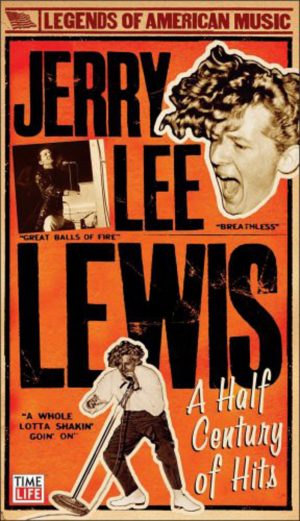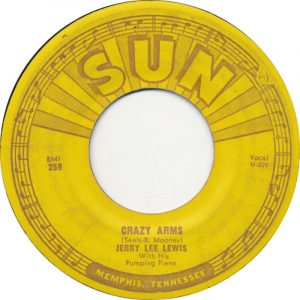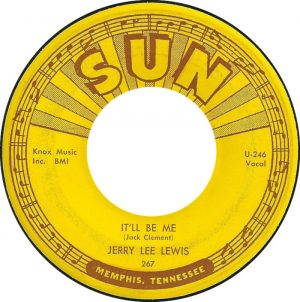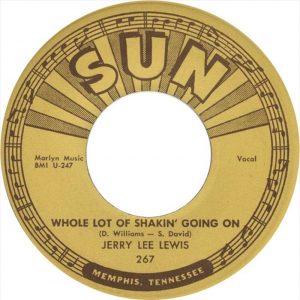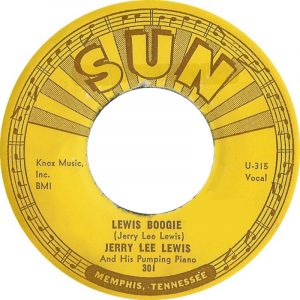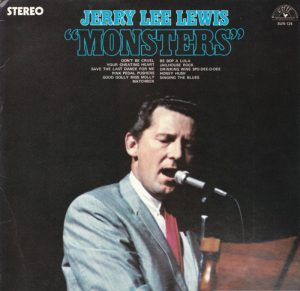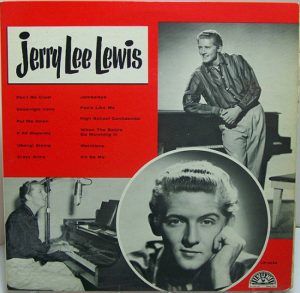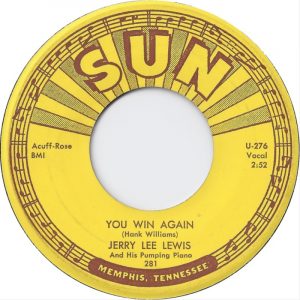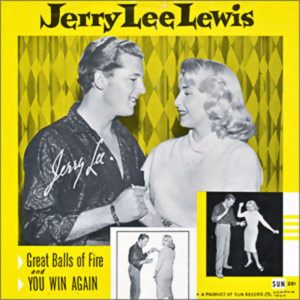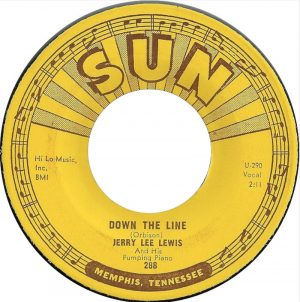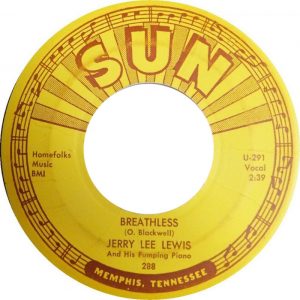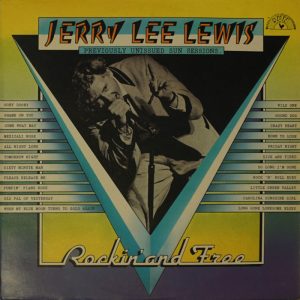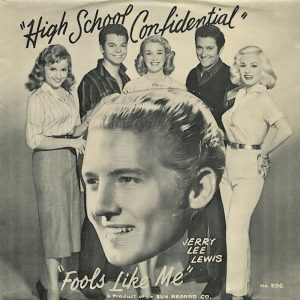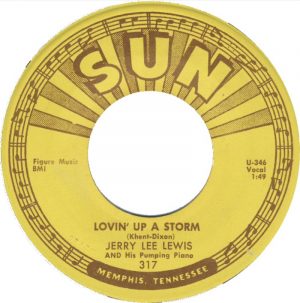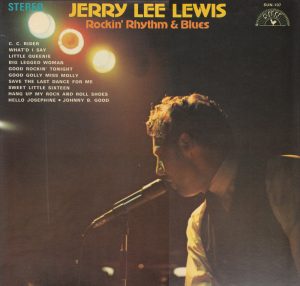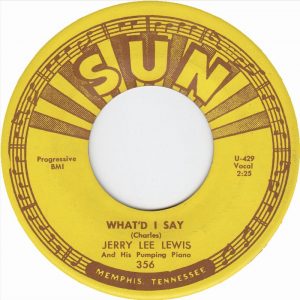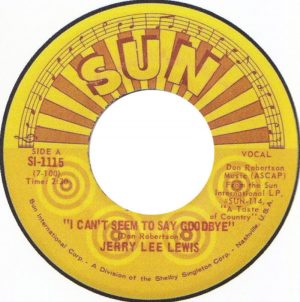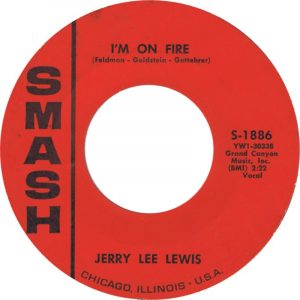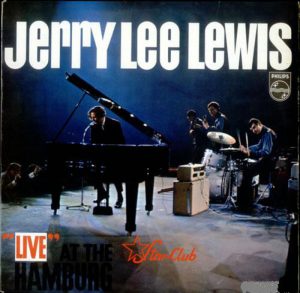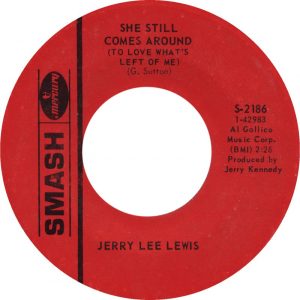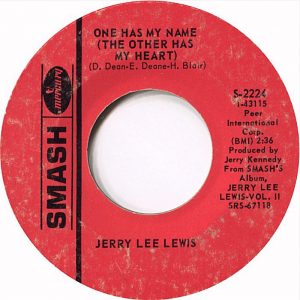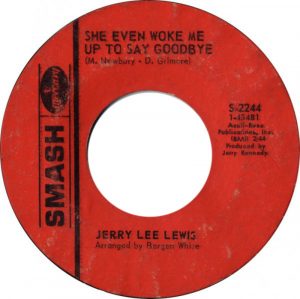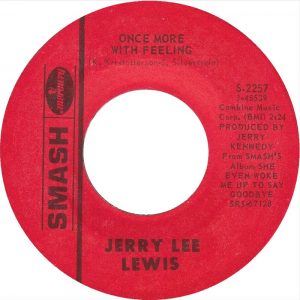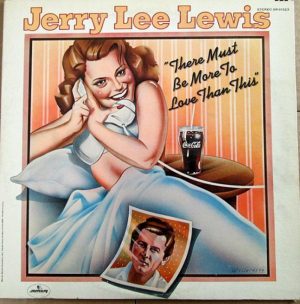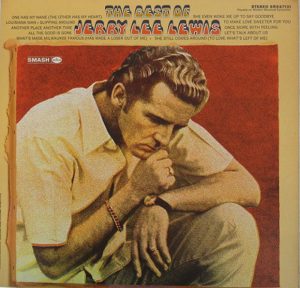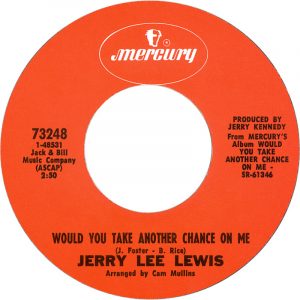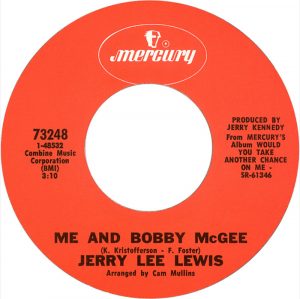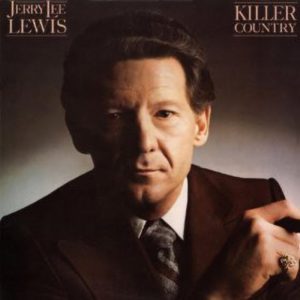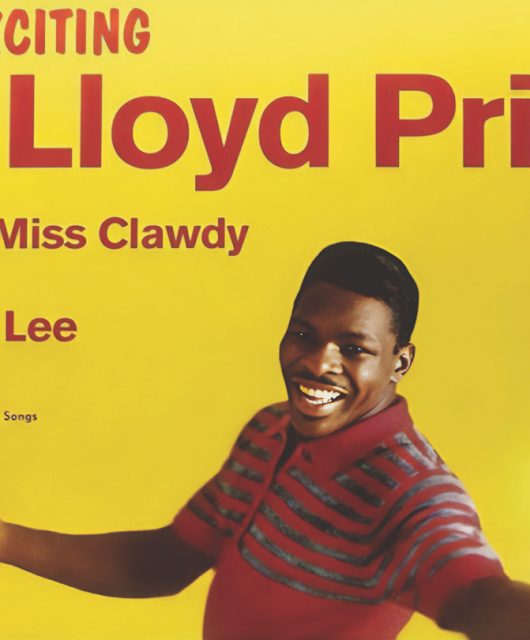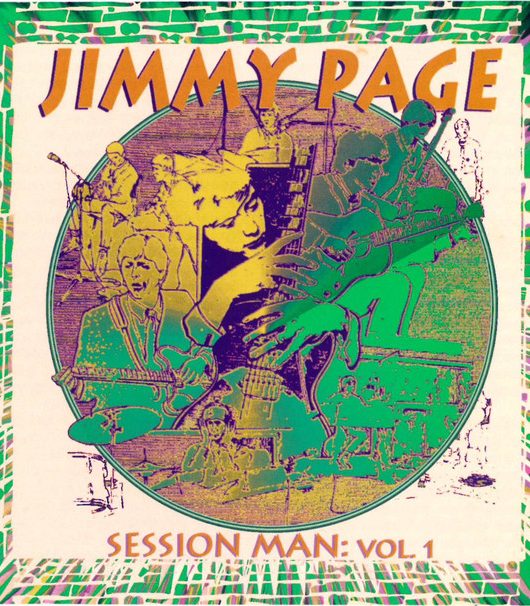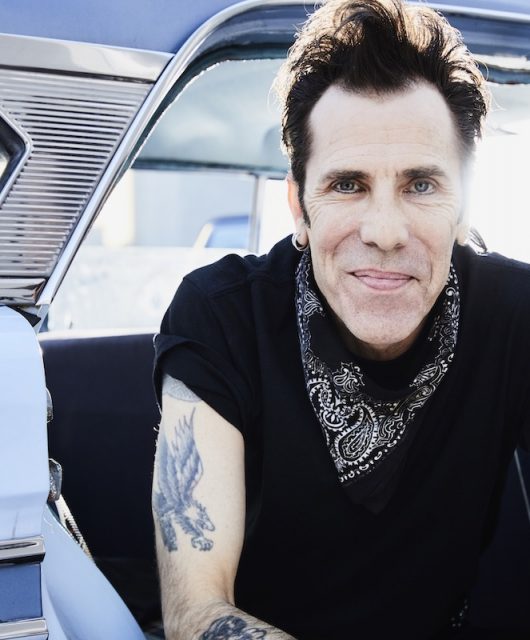From a rough tape cut for two bucks in 1952 to timeless rockers to the sweeping country heartbreakers of his later years, Vintage Rock picks our Top 40 Essential Jerry Lee Lewis recordings…
In late 1957 it looked for all the world like Sam Phillips’ Louisianan prodigy really was lining up to be the next Elvis Presley. When Vintage Rock spoke to Sun Records promoter Barbara Barnes Sims, she remembered Phillips’ initial reaction to the young wannabe: “This man is going to be big!” Sam enthused. “No-one anywhere has ever recorded an artist like Jerry Lee Lewis!” Sam was, of course, right. And even though he eventually, reluctantly, turned his back on the star, no scandal or headline was ever going to be enough to throw the Killer off his game.
“He was self-confident to the point of arrogant,” Sims went on to point out. “He always expected to be number one.” For the world at the time it was an epic, career-ending fall from grace. For Jerry, it was merely a temporary setback.
The Ferriday Fireball
It’s telling to note that, Jerry was back at the business end of the US and UK hit parades with a pumped-up version of Ray Charles’ What’d I Say a few years later – so, even though the sun dipped below the horizon as the ’60s took hold, all was most certainly not lost.
His early attempts to enter the country arena were met with muted applause when both the Hayride and the Opry turned him away, but post-fall, it was a genre that opened its door wide. And it isn’t that strange when you consider the lyrical themes of country – as Jerry once sang, his life would indeed make ‘a damn good country song’.
And so, here we explore Lewis’ sprawling output for some of his must-listen moments; from his first intimate session behind the ivories through the primal Sun years and on into his glorious country prime – plus a couple of live roof-raisers thrown in for good measure…
Don’t Stay Away (’Til Love Grows Cold) – Recorded 1952
Jerry Lee’s scratchy, slightly distorted first demo of Lefty Frizzell’s hit, a souvenir cut at Cosimo Matassa’s J&M studios in New Orleans for just $2, is a vital piece of the puzzle. With an innocent – yet masterful – approach to melodic piano-playing and a confident falsetto, the 17-year-old Jerry’s incendiary style was still in development. Still, that first two-sider hinted at his desire to rock, and an early instrumental version of his later classic Lewis Boogie (then known as New Orleans Boogie) appeared as its plattermate from the same session. Find this on Time Life’s 2006 compilation Jerry Lee Lewis – A Half Century Of Hits, and for more demo magic seek out the bluesy I Don’t Hurt Anymore and If I Ever Needed You (I Need You Now), recorded two years later.
Crazy Arms – Recorded 1956
For the Killer’s debut 1956 Sun release, drummer JM Van Eaton was called upon to keep rhythm over Ray Price’s country No.1 Crazy Arms. Credited to ‘Jerry Lee Lewis and his Pumping Piano’, it’s a radical reading, albeit far from the fiery transmissions that would follow. According to engineer Jack Clement, Sam Phillips only had to hear a few bars to know he’d found his new star. “Sam made a disc in the control room and took it down to [local DJ] Dewey Phillips that night,” Clement recalled. “By Thursday it was in the stores, and it did very well for a record by a new artist.” Released in December, Crazy Arms was a fine introduction to Phillips’ new protégé.
It’ll Be Me – Recorded 1957
When this was cut at Lewis’ second Sun session in February 1957, ‘Cowboy’ Jack Clement had his own composition pegged as the follow-up to Crazy Arms, but it was quickly demoted to the flip once Whole Lotta Shakin’ Goin’ On was in the can. Nonetheless, herein lies the purest of rockabilly grooves set by Van Eaton’s traps, Roland Janes’ chugging rhythm guitar, and Jerry’s commanding right hand delivering a masterclass in boogie-woogie halfway through. Released in March 1957, it was cut at various speeds, the slower of which closed his debut Sun LP. An unissued (inferior) version added a more playful groove.
Whole Lotta’ Shakin’ Goin’ On – Recorded 1957
The song that (almost) toppled Elvis from on high. Jerry Lee’s perennial breakthrough was first cut as a booming, bluesy number on Okeh by R&B chanteuse Big Maybelle under the supervision of Quincy Jones two years earlier (Dave ‘Curlee’ Williams claims he wrote it alone in the Florida swamps, while Nashville’s Roy Hall, credited as ‘Sunny David’, also has dibs on a slice). Jerry heard it as a kid in local Natchez juke-joints, and the sexually-charged romp was nailed in one take in 1957 on Sam Phillips’ little spinet piano. Airplay across the South came quickly, and after the slot on The Steve Allen Show in which he defiantly kicked away his piano stool, Lewis was on his way.
Lewis Boogie – Recorded 1957
One of Lewis’ own early juke-joint-inspired creations, New Orleans Boogie grew into a frenzied piece of cocksure self-glorification (albeit with a lyrical nod to its New Orleans/Memphis roots). First brought to feverish life in 1952 when Jerry Lee was in his teens and then re-imagined in summer 1957 with those self-aggrandising lyrics inserted, it’s the sound of a young man full of hopes and dreams. During this two minutes of joyful abandonment, Lewis’ frantic, freeform piano playing is untouchable, while Roland Janes’ snappy fretwork supplements the fireworks. The rollicking Star-Club version reveals this to be a number that’s really best heard live.
Drinkin’ Wine Spo-Dee-O-Dee – Recorded 1957
Granville ‘Stick’ McGhee’s classic 1949 rhythm and blues hit for Atlantic was the very first song sung live by a 14-year old Jerry Lee. By the time he’d cut the tune at Sun it had a new set of clothes entirely, and – with a foot on the gas to up the tempo – it was delivered with a touch that shows how much Lewis took from Stick’s early rock’n’roll prototype. This immortal R&B side, inspired by a call-and-response chant learnt by McGhee in the Army, has been covered by most serious rock’n’rollers at some point or other, but the Killer’s definitive Sun version remains up there with the best, and there’s a nice guitar solo from Roland Janes, too. You can find it on 1971’s Monsters LP.
Matchbox – Recorded 1957
It’s the 21-year old session-playing Jerry Lee Lewis’ impellent rhythm that can be heard firming up the groove on the original Carl Perkins classic (a session that led to the infamous and impromptu Million Dollar Quartet sit-in later in the day), so it stands to reason that Lewis would fancy having a go at the track himself, this time with his propellant piano placed much higher in the mix and with some bold backing vocals added in support. Jerry Lee’s reworking became a fulcrum of his 1958 eponymous Sun LP and was also added to the High School Confidential EP. The white-hot live version on 1964’s Live At The Star-Club, Hamburg album is essential listening, too.
Mean Woman Blues – Recorded 1957
Gladys Music songwriter Claude Demetrius wrote a few tracks for Elvis, including Hard Headed Woman (from King Creole) and this tune, another bespoke movie track penned for Presley’s 1957 film Loving You, and taken to No.111 by the King. For Jerry Lee, it led the charge on his 1957 The Great Ball Of Fire EP together with I’m Feeling Sorry, another track written by Sun engineer Jack Clement, Whole Lotta Shakin’ Goin’ On and Carl Perkins’ Turn Around. It also found a home in support of the UK London release of Great Balls Of Fire; again, for a rip-snorting version, try the Live At The Star-Club, Hamburg LP.
You Win Again – Recorded 1957
Clearly, judging by this astounding three-minute tribute, Jerry Lee put Hank Williams on a pedestal. Not only is this startling take on the classic piece of blues balladry a revelation in terms of Lewis’ vocal potential, with Sam Phillips’ slapback echo shadowing the melody as it rises gently before waning in drooping despair, but Jerry also offers up a thrilling piano display that rides the tempo beautifully. Add a masterful solo and some sturdy oohs, ahhs and mm-bops from the overdubbed backing vocals and this is right up there. You Win Again made No.14 in the country charts (No.195 pop); track down Bear Family’s Jerry Lee Lewis box set for plentiful alternate takes.
Great Balls Of Fire – Recorded 1957
“Great Balls Of Fire did a whole lot toward gettin’ me right where I needed to be,” said Jerry Lee. “We knew early on it was a classic.” His signature tune was penned by Otis Blackwell together with one-time Platters singer Jack Hammer, but initially it caused an issue for the highly religious Lewis; on the Sun tapes he can be heard engaged in heated theological discussion with Sam Phillips, worried about playing the devil’s music. After shifting a million copies in its first two weeks, it became Sun’s best-selling record, making No.12 on the Billboard chart; though Georgia Gibbs’ version came out first in the UK, it still made No.11… and today it’s one of the globe’s biggest all-time sellers.
Down The Line – Recorded 1958
Written and first released as Go! Go! Go! by The Big ‘O’ Roy Orbison, this rockabilly flyer featured on Orbison’s 1956 Sun debut 45 (with the Teen Kings) as back up to his early calling card Ooby Dooby. Jerry Lee chose to pick the tune up at a mid-January session in Memphis, and while it eventually ended up playing second fiddle to the chosen A-side Breathless, his shuddering interpretation – with JM positively slamming the skins and Jerry almost assaulting the piano – still managed a respectable No.151 placement. Notably, Jerry also recorded Ooby Dooby, which lay dormant until it found a home on Charly Records’ all-encompassing The Sun Years box set.
Breathless – Recorded 1958
The next track chosen to keep Jerry Lee at the top was Breathless, a storming rock’n’roller, again penned by Otis Blackwell (as Rick Bragg summed up: “It was like Otis Blackwell was writing blank checks for the great singers to fill in”). Jerry Lee, a dapper maverick in a black tuxedo with leopard-skinned accoutrements, closed his slot on The Dick Clark Show in February ’58 with this vigorous workout. Soon afterwards, Clark and his sponsors Beech-Nut chewing gum set up a deal whereby viewers could send in gum wrappers and receive the single. Breathless began to sell like hot cakes, while Beech-Nut outsold Wrigley’s for the first time in its history.
Jambalaya (On The Bayou) – Recorded 1958
Named after the popular Creole dish, taking musical direction from Cajun standard Grand Texas and with help rumoured to have come from ‘King of the Hillbilly Piano’ Moon Mullican, this tasty treat is one of Hank Williams’ finest creations. Jerry Lee’s version of the track opened side two of his debut album and later featured on Sings The Country Music Hall of Fame Hits, Vol. 1. The definitive way to experience this track, however, is via the rollicking live showdown between Fats Domino, Ray Charles, Ronnie Wood and Jerry Lee, closing out the Fats And Friends show in Storyville, New Orleans in 1986.
Wild One (Real Wild Child) – Recorded 1958
Aussie rocker Johnny O’Keefe’s 1958 hit was well-suited both to Jerry’s flashy piano style and his demeanour, and in his hands it motored its way into the rock’n’roll canon… eventually. Lewis first cut the track at Sun way back in April of 1958 with the trio of Roland Janes, Billy Riley and James Van Eaton, but it was shelved soon afterwards and didn’t see the light of day until almost two decades later when it appeared on Sun Records’ 1974 compilation Rockin’ And Free (it also later featured on Charly Records’ Jerry Lee Lewis And His Pumping Piano LP). Wild One (Real Wild Child) was a showcase for Lewis’ utter command of the ivories – and it had a deft guitar solo, too.
Slippin’ Around – Recorded 1958
Margaret Whiting and Jimmy Wakely took Floyd Tillman’s ode to infidelity to the country No.11 in September 1949, and their duet served the tale of two lovers engaged in a secretive dalliance perfectly – but, as always, it was nothing like Jerry Lee’s eventual interpretation. While a polished Nashville version appeared on the flip of Jerry’s single She Still Comes Around in 1968, the superior Sun recording, cut in April 1958, remained unissued until the From The Vaults Of Sun LP in 1974. Tillman’s humorous follow-up I’ll Never Slip Around Again – in which the couple are now married, and suspicious that they themselves are being cheated on – was left alone by Jerry Lee.
High School Confidential – Recorded 1958
In January 1958 Lewis inked a deal to appear in the MGM film High School Confidential, and the theme tune – written by Jerry Lee together with actor and eventual rockabilly icon Ron Hargrave – was rush-recorded the following month. Together with a band made up of bass fiddle-player JW Brown and road drummer Russ Smith, Jerry Lee was soon miming the track on the back of a flat-bed truck for the movie. The debut album version is best, beginning with vociferous stabs before opening out into boogie-woogie goodness, and its intentions to animate high school hops were surely met… until the scandal hit, and Sun cancelled the record’s distribution.
Lovin’ Up A Storm – Recorded 1958
This is blues-driven dynamic rock at its best, with the unmissable character of Sun’s Memphis studio ingrained into its very grooves via some boxy snare slaps from Jimmy Van Eaton and the usual solid rhythm work from Roland Janes, both reinforcing Jerry Lee’s thumping 88s. However, even with grand metaphors ranging from wind-flighted oak leaves and clickety-clacking trains to lightning, hurricanes, ice cold water and the self-referencing mention of Great Balls Of Fire, this still missed the US charts at the time, no doubt in part because of the matter with Myra. But nonetheless, Lovin’ Up A Storm managed a respectable No.128 in the UK, despite the uproar.
Big Blon’ Baby – Recorded 1958
“Jumpin’ Jehoshaphat! Big Blon’ Baby!” This jaunty two-minute throwaway about the attributes of a passing nubile deserves its place here, even though it only made the flipside to Lovin’ Up A Storm. Jerry Lee’s reliable Sun crew helped cook up this hiccupping take on the original cut by rockabilly tearaway Ronnie Self from the previous year. Much like Self’s primitive offering, Lewis’ version sat on the flip of a single, and neither performed well. Johnny Kid & The Pirates’ version is also worth a spin, as is Jerry Lee’s shot at another Ronnie Self track, Love On Broadway, which remained unissued until 1971.
CC Rider – Recorded 1960
First unveiled on Sun’s 1969 compilation Rockin’ Rhythm And Blues – snatched from a June 1960 session that featured Ace Cannon’s famously unruly sax – and later re-approached with Jerry Kennedy in Nashville for Lewis’ timely return to the Big Beat on 1972’s The Killer Rocks On, this 12-bar blues was made famous in 1925 by Ma Rainey. CC Rider (or See See Rider Blues, as it was then known) was given a hefty clout when put through the Lewis mould. Elvis was known to open his Vegas shows with it, and it’s been recorded by Big Bill Broonzy, Lightnin’ Hopkins, LaVern Baker, Ella Fitzgerald and Chuck Willis, whose version helped popularise ‘The Stroll’ dance.
What’d I Say – Recorded 1961
Despite being demonised by the press, Jerry Lee still managed to squeeze out a No.130 Billboard hit with this rollicking affectation, out on Sun in 1961. Ostensibly a simple piano stomp through Ray Charles’ 1959 hit with a slight rockabilly bent, it was recorded several times at Sun in January, June and October 1960 with Sam Phillips behind the desk and various musicians in tow. The eventual Sun 356 take was actually carved out in February 1961 during one of the first sessions at Phillips’ new Sun Custom Recording Studio in Nashville with an enviable line-up: Hank Garland (guitar), Bob Moore (bass), Buddy Harman (drums), and the Anita Kerr Singers.
Cold Cold Heart – Recorded 1961
Taken from the great canon of American classics – the first record of which dates to 1950 – Hank Williams’ longstanding country hit Cold, Cold Heart sat well in the Jerry Lee Lewis catalogue thanks to its deep honky tonk leanings. As such, Sun released it in the hope that they could continue the success of Lewis’s last single, What’d I Say. It almost worked, as Jerry’s shimmering rendition managed to score a decent No.122 in the country listings. Another version worth scouting out is to be found on the Killer’s 1969 LP Sings The Country Music Hall Of Fame Hits, Vol. 2. The track has also been recorded by Johnny Cash and Bill Haley, amongst many others.
I Can’t Seem To Say Goodbye – Recorded 1963
Laid down during one of Jerry’s final sessions at Sun in August 1963, this delicate and doleful tale of a failing relationship was criminally shelved at the time. Scotty Moore joined JLL’s regular six-stringer Roland Janes in the studio, while drummer Morris ‘Tarp’ Tarrant – supposedly given his nickname as Jerry Lee couldn’t pronounce his name – sat behind the kit (Tarrant later enjoyed a career keeping time for such luminaries as Elvis, Bill Haley, Chuck Berry and Waylon Jennings). The song was put aside by Sun until 1970 when it was issued to capitalise on Lewis’ country success; it also opened the A Taste Of Country LP, issued in the same year.
I’m On Fire – Recorded 1964
Written by Bob Feldman, Jerry Goldstein and Richard Gottehrer, this mid-’60s rocker borrowed from both the theme and the 12-bar machinations of Jerry Lee’s ubiquitous smash Great Balls Of Fire, and it’s a solid slice of wild, boogie woogie-edged rock’n’roll. Cut with Shelby Singleton on Valentines Day, 1964 at RCA Victor’s premises in Nashville, it’s best experienced via some rare footage of the Don’t Knock The Rock show on Granada TV… it’s pumping piano at its best, with the Killer surrounded by an uncontrollable audience. Sadly, the single only smouldered at the lower echelons of the Hot 100.
Money (That’s What I Want) (live) – Recorded 1964
It may have been recorded during what have become generally regarded as Jerry Lee’s ‘wilderness years’, but Live At The Star-Club, Hamburg is an recording of undoubtedly mighty proportions, made all the better by the inclusion of one of the finest versions of this classic track. Written by Tamla Records founder Berry Gordy together with Motown scribe Janie Bradford, Money (That’s What I Want)’s central motif translated perfectly to Jerry Lee’s dissentious piano style, particularly with the man in career-best form. With a backing band doing their damnedest to keep up with him, Lewis is like a man possessed, and this is a spectacular listen.
Your Cheatin’ Heart (live) – Recorded 1964
This Hank Williams centrepiece is a song that’s utterly ingrained into the country psyche, and the song accrues the added poignancy of having been recorded during the final session of Williams’ life. Released just after his passing, it’s become synonymous with the singer ever since. Sad as that may be, Lewis paid fitting tribute here, stretching the boundaries of the song in the live arena, once more with the help of Brit combo The Nashville Teens in support. For the Star-Club version, the hillbilly charm of Hank’s original meets Jerry’s sublime flickering blues licks to illuminating effect – and it’s the only breather he offered the audience that entire night.
All The Good Is Gone – Recorded 1968
All The Good Is Gone surely contains one of the finest vocal takes in Jerry Lee Lewis’ entire country repertoire, and he seemed to completely connect with Conway Twitty’s plaintive ballad of loss and love almost as if it had come from his own heart. The track was the very first to be laid down at Jerry’s inaugural – and transformational – country session with Eddie Kilroy, but although Twitty himself took the track to No.11 in the mid-’70s, in the JLL canon it merely held rank as the flip to the hit single What’s Made Milwaukee Famous (Has Made a Loser Out of Me). Both tracks feature on his country revival LP, Another Place, Another Time.
Another Place, Another Time – Recorded 1968
It was with Jerry Chesnut’s sorrowful lament to loneliness that the Killer turned his fading fortunes around and reinvented himself as a pure country artist. With seriously slim pickings from a skeleton cast of songwriters willing to offer up their songs, and publishers literally turning their backs, Jerry had nothing to lose. He entered the studio on January 9, 1968 with ex-rodeo star-turned Mercury record producer Eddie Kilroy… and his fingers firmly crossed. Somehow, the stars aligned. Issued via Smash in March 1968, Another Place, Another Time took the crestfallen singer to No.14 on the country charts and held firm there for four months.
What’s Made Milwaukee Famous (Has Made A Loser Out Of Me) – Recorded 1968
Things happened quickly in those days. When commissioned to write for Jerry Lee with precious little time on his hands, countrypolitan pioneer Glenn Sutton commandeered the Schlitz beer slogan (“The beer that made Milwaukee famous”) and penned this charming drinking song overnight. Jerry Lee liked the results and cut what would become a massive hit the following day, augmented by steel, fiddle and a mouth organ. Lewis returned to the song for a duet with Rod Stewart on his 2006 album Last Man Standing.
She Still Comes Around (To Love What’s Left Of Me) – Recorded 1968
Continuing very much in the same musical vein as his pure country breakthrough, Another Place, Another Time, this self-pitying, fiddle-laced admission of fallibility (again written by Glenn Sutton) was another perfect fit for the keening vocals – and wayward personality – of Jerry Lee, and gave his next album its title. Jerry cuts a tragic figure as he mourns, “Payday nights and painted women/ They do strange things to me,” but it turned out that what was left of Mr Lewis was sizeable, by any reckoning; the single made a creditable No.12 in the country Billboard listings.
To Make Love Sweeter For You – Recorded 1968
This twinkling late-’60s mainstream country single was Lewis’ third time at the top of the Billboard country charts, lifted up there with the hypnotic allure of some distant, siren-like backing harmonies and a woozy, ever-present pedal steel guitar. Lewis returned once again to Glenn Sutton for material after having had two No.12 singles written by him, but this one would require the help of Mercury staff producer Jerry Kennedy to add a little magic to a melody that both men felt didn’t quite live up to the lyrics. To Make Love Sweeter For Youwould finally make it to the top in March 1969. A passionate, poetic love song that’s mighty easy on the ear.
One Has My Name (The Other Has My Heart) – Recorded 1969
Arriving mid-way through Jerry Lee’s golden run of country hits, this single originated from Stetson-loving Western artist Eddie Dean – lauded by his peers as “the best cowboy singer of all time” – who put it together with his wife Lorene ‘Dearest’ Dean and Hollywood songsmith Hal Blair. Cut by Lewis on 26 February 1969 in the middle of a mammoth session with Jerry Kennedy at Columbia Recording Studio in Nashville, this ended up a No.13 hit on the US country chart as the ’60s came to a close. It also features on his album of the same year, Sings The Country Music Hall Of Fame Hits Vol. 2.
She Even Woke Me Up To Say Goodbye – Recorded 1969
Co-written by Nashville tunesmith Mickey Newbury, this heady concoction of soulful country is testament to his reputation. When sung by Newbury, it’s brutal in its orchestral depiction of loss and heartbreak; Lewis, on the other hand, brought his own blues and rockabilly slant to the table. According to Jerry Kennedy, Lewis nailed this plaintive slow step having heard it just the once, and it’s that careless immediacy that haunts his version so beautifully. Another to miss the country summit by one spot, the opening single of his 1969 album of the same name further boosted Lewis’ second life.
Once More With Feeling – Recorded 1969
“I never saw anything like it,” says Johnny Cash, introducing Jerry Lee’s performance on a 1970 episode of his TV show. “To me he is one of the greatest entertainers that I’ve ever seen.” Jerry Lee then ushers in this weary steel-augmented ballad with a graceful air, a million miles away from the rock’n’roller of the ’50s. Co-written by Kris Kristofferson with Shel Silverstein, the song was executed by a team of Nashville’s finest sessioneers at the city’s Monument studios. The song found a home on the 1970 LP She Even Woke Me Up To Say Goodbye, and fell one shy of the US Country top spot as a single.
Sweet Georgia Brown – Recorded 1970
While Lewis’ There Must Be More To Love Than This album wasn’t one of his finest, in its midst was this superb breakneck rework of the old classic Sweet Georgia Brown, originally composed by Ben Bernie, Kenneth Casey and Maceo Pinkard in 1925; it was a No.11 hit for Bernie (known as ‘The Old Maestro’) and his Hotel Roosevelt Orchestra in the same year. For Lewis, it was one of his greatest moments. “Oh, man! What a record! It’s so far above – so far ahead of anybody’s thinkin’ in the music business that they could never comprehend the meaning of it. It had the flavour of everything,” he told biographer Rick Bragg. Note Jerry’s “Play your fiddle, son!” call to Kenny Lovelace midway through. A supersonic romp!
Louisiana Man – Recorded 1968
From one Louisianan to another, this perky swamp-boogie classic came from the pen of fiddle player and singer-songwriter Doug Kershaw, who wrote it in tribute to his hard-working father. Kershaw and his brother Rusty – billed as ‘Rusty and Doug’ – took the song into the Billboard country Top 10 in 1961, and it has since been covered by everyone from surf music pioneers Jan & Dean to Johnny Cash (what’s more, it was also carried on a tape recorder as part of the personal playlist of the moon-bound Apollo 12 astronauts in 1969). Jerry Lee recorded this light-hearted yet charming side in Nashville for the She Still Comes Around (To Love What’s Left Of Me) LP.
Would You Take Another Chance On Me – Recorded 1971
With Would You Take Another Chance On Me, songwriting duo Jerry Foster and Bill Rice (both Nashville Songwriters Hall Of Fame inductees) provided Jerry Lee Lewis with one of the standout moments in his country catalogue and his fifth country No.11 hit. With the sweeping swells of Jerry Kennedy’s grandiose, multi-layered production, the dewy-eyed romance of the composition was enhanced to the max. It’s no wonder that this heartfelt request for forgiveness, made on bended knee, gave Jerry’s fourth Mercury album its name. It also provided an eloquent flipside for Me And Bobby McGee.
Me And Bobby McGee – Recorded 1971
No expense was spared in ensuring Jerry Lee took Kris Kristofferson’s country classic right to the top, and Jerry Kennedy gladly installed a 10-piece string section to guarantee a suitable level of drama. Roger Miller had fared well with his straight-laced if ultra-clean country version of the song in 1969, and Janis Joplin’s gutsy, freewheeling and jaw-droppingly soulful take of the track went to the top of the chart posthumously in 1971, but Jerry’s version – with his boogie piano as a foundation – rocked up the whole affair, intensifying it with a fresh slant that helped propel him back into the Billboard pop listings for the first time since the early ’60s.
Middle Age Crazy – Recorded 1977
Recorded in August 1977 with a line-up of Nashvillian talent and with Elvis’ backing singers The Jordanaires in harmonious support, Sonny Throckmorton’s Middle Age Crazy is a side that meditates on the passing of time. Bereft of the humour at the heart of the similarly-themed single Thirty Nine And Holding, this instead purveys a moving expression of ageing, contrasted by the “young thing beside him that just melts in his hands”. The song featured in the 1980 romantic comedy of the same name starring Bruce Dern and Ann-Margret, with the sell line “There’ll be a hot time in the hot tub tonight!” Hmm.
Thirty Nine and Holding – Recorded 1980
A light-hearted, yet ultimately touching moment on Jerry Lee’s 1980 country album Killer Country, this was produced by Eddie Kilroy, the initial catalyst to the Killer’s successful country resurgence. As he himself was well into his middle-aged years when he cut the track, Jerry clearly related to the lyrics and, as he sings out the line “Doing all the ’50s steps, in a 1980 crowd”, the wry intonation in his voice is plain for all to hear. Released as a single on Elektra in 1980, Thirty Nine And Holding marked something of a slight return for Lewis, returning him to the Top 10 for the first time since 1977 – but it also, sadly, marked a full stop on his country hits.
Over the Rainbow – Recorded 1980
For many, the best moment on 1980’s Killer Country is Lewis’ reimagining of this old standard, made famous, of course, by Judy Garland in The Wizard Of Oz. Jerry Lee’s redaction is far less starry-eyed, a little more downtrodden (nay, fragile) and, well, deep. “It had a certain feeling to it,” Lewis expanded in 2014, “like a religious undertone. A something that you seldom ever can hear.” The Killer returned to Eddie Kilroy to man the controls, while its economical yet expansive backing included guitarist Kenny Lovelace, the Lea Jane Singers, and the excellently-named organist Bunky Keels. Lewis performed the song with Chris Isaak for 2007’s Last Man Standing album.
For more on Jerry Lee Lewis click here
Read More: The Vintage Rock Top 101 Rockabilly Tracks


